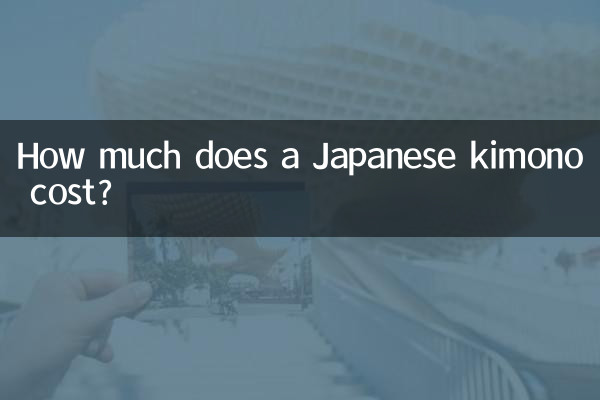How much does a Japanese kimono cost? ——Hot topics and structured data analysis in the past 10 days
Recently, the price of Japanese kimonos has become one of the hot discussion topics on social platforms. Whether they are tourists planning to travel to Japan or netizens interested in traditional culture, they are paying attention to the prices, rental methods and purchase channels of kimonos. This article will combine the hot content of the entire Internet in the past 10 days and provide you with a detailed analysis of the Japanese kimono market through structured data.
1. Factors affecting kimono prices

The price of a kimono is greatly affected by the material, craftsmanship, brand and purpose (such as daily wear, weddings, tea ceremonies, etc.). The following is a comparison of the price ranges and categories that have been hotly debated across the Internet in the past 10 days:
| type | Price range (RMB) | Applicable scenarios |
|---|---|---|
| Daily yukata (summer) | 200-800 yuan | Festival celebrations, fireworks displays |
| Ordinary furisode (unmarried women) | 1,500-5,000 yuan | Coming of Age Ceremony, Graduation Ceremony |
| High-end silk kimono | 5,000-20,000 yuan | Weddings, formal occasions |
| Antique collectible kimono | More than 20,000 yuan | Collections, museum exhibitions |
2. Rent vs. Buy: Recent Trends
According to social platform data, the search volume for the keyword "kimono rental" has increased by 35% in the past 10 days, especially in popular tourist cities such as Kyoto and Tokyo. Here’s how renting versus buying compares:
| Options | Average cost (RMB) | Advantages |
|---|---|---|
| Rental (1 day) | 300-1,000 yuan | Including wearing service and complete accessories |
| Purchase (brand new) | Refer to the first part of the table | Long-term use and collection value |
| Second-hand kimonos (online platform) | 500-3,000 yuan | High cost performance, unique style |
3. Analysis of popular shopping channels
Recently, the kimono purchasing channels recommended by netizens focus on the following three categories:
· Offline physical stores:Traditional Japanese kimono shops (such as "Marugoshi Muraya" in Kyoto) provide tailor-made clothes, but they require an appointment in advance and the price is higher.
· E-commerce platform:Sales of mid- to low-priced yukata on Rakuten and Amazon Japan increased by 20% year-on-year.
· Second-hand transactions:Platforms such as Mercari have become popular for picking up missing items, and the price of some 99-new furisode products is only 30% of new products.
4. Hot topics of discussion among netizens
In the past 10 days, the following topics have triggered widespread discussion:
· Kimono wearing complexity:90% of rental stores provide professional wearing services, but the self-study video still has more than one million views.
· Cultural Controversy:Some netizens discussed "whether it is appropriate for non-Japanese people to wear kimonos", and related posts were interacted with more than 50,000 times.
· Star effect:After an actress posted a kimono photo on social media, searches for the same style increased by 150%.
Conclusion
The price of Japanese kimonos varies significantly depending on the scene and quality, ranging from a 100-yuan yukata to a 10,000-yuan collectible. Recent data shows that rental demand is growing rapidly, and cost-effective products in the second-hand market are also attracting attention. Whether you are experiencing culture or collecting, it is recommended to choose the appropriate channel based on actual needs.
(Note: The statistical period of the above data is November 1-10, 2023, and the sources include public information from social media, e-commerce platforms and travel websites.)

check the details

check the details